Last month I birded at Gemini Springs 10 times, recording 71 (+1) species. I think that may be my best month at the park; it certainly blows away my total of 57 species from last October. The complete list for October 2014 is at the end of this post.
It was a pretty exciting month. Four birds were new to my all-time list for Gemini Springs: Blue-winged Warbler; Tennessee Warbler; Magnolia Warbler; and Summer Tanager. Four species were my FOY (first of year) at the park: Northern Harrier; Merlin; Sedge Wren; and Baltimore Oriole. I had another 12 FOF (First of Fall) species, including Palm, Orange-crowned, and Yellow-rumped Warbler, Eastern Phoebe, Pied-billed Grebe, and Tree Swallow. Yeah, it was a good month. Here are a few photos.
The month started out with lots of standing water still in various parts of the park. I checked this meter a few times, but unfortunately I don’t have any idea what it “should” be in a normal October. Hopefully I’ll remember to check next year. I’ll also try to remember to have a look before our rainy season begins! Anyway, here is the level from October 5th.

water level near the spring | 05 October 2014
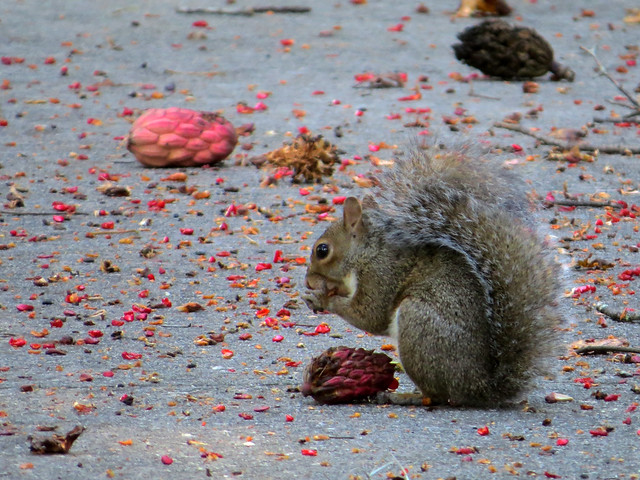
Eastern Grey Squirrel eating magnolia seeds | 05 October 2014
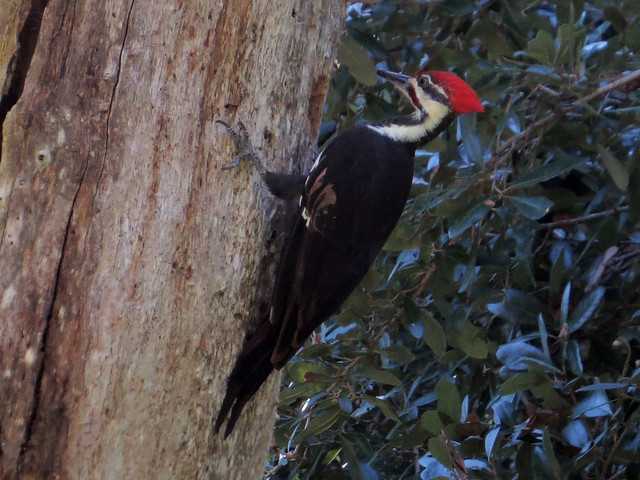
Pileated Woodpecker | 06 October 2014

Brown Thrasher | 07 October 2014
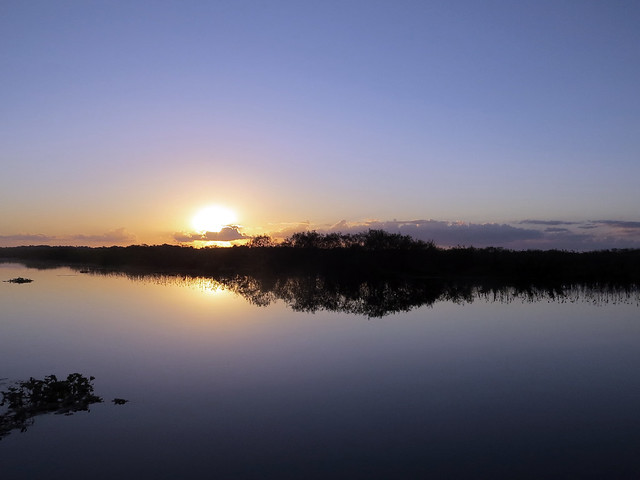
sunrise | 13 October 2014
On October 13th I saw this female American Kestrel trying to have breakfast. She was being harassed by a pair of Blue Jays. In this photo she’s trying to yell them off. You can see her meal, a dragonfly, at her feet.
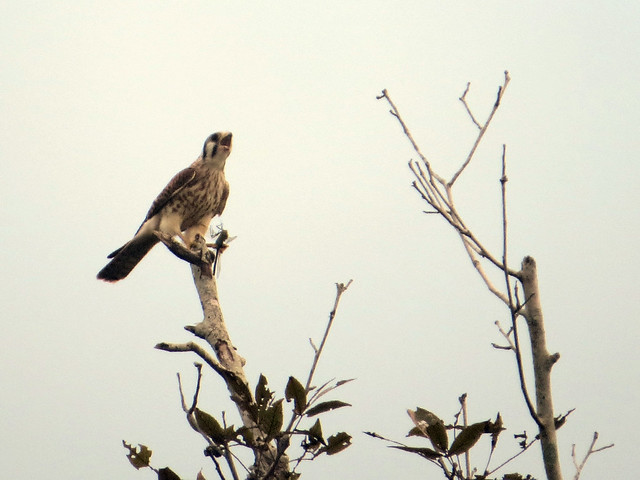
American Kestrel | 13 October 2014
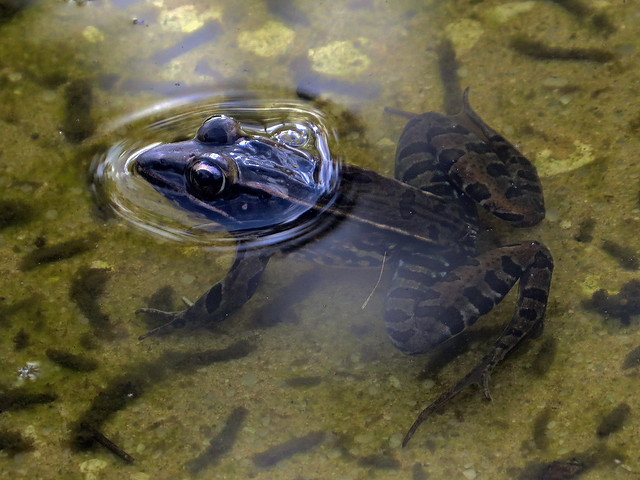
Southern Leopard Frog | 13 October 2014
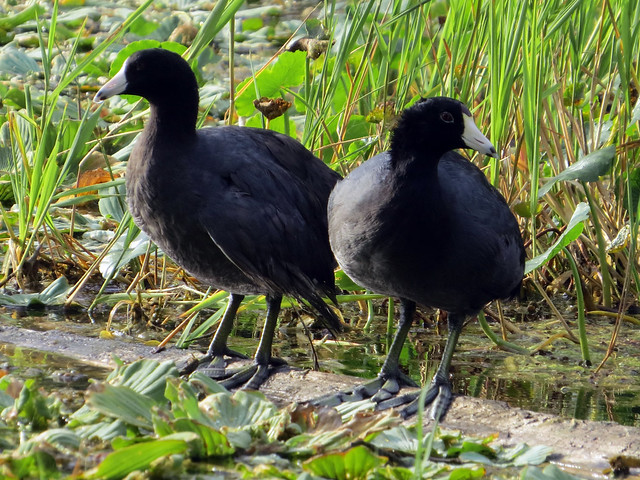
American Coots | 14 October 2014
It’s not a very natural photo, but on October 20th I was pretty excited with another first. I’d never seen a Praying Mantis before! There were two on the bike path. One was moving very slowly, and the other wasn’t moving at all. After watching them awhile I gently poked them off the path so they wouldn’t get run over. Praying Mantises can run!
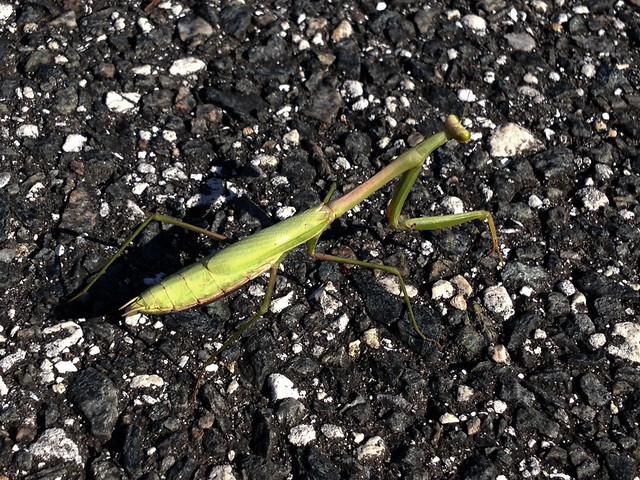
Praying Mantis | 20 October 2014
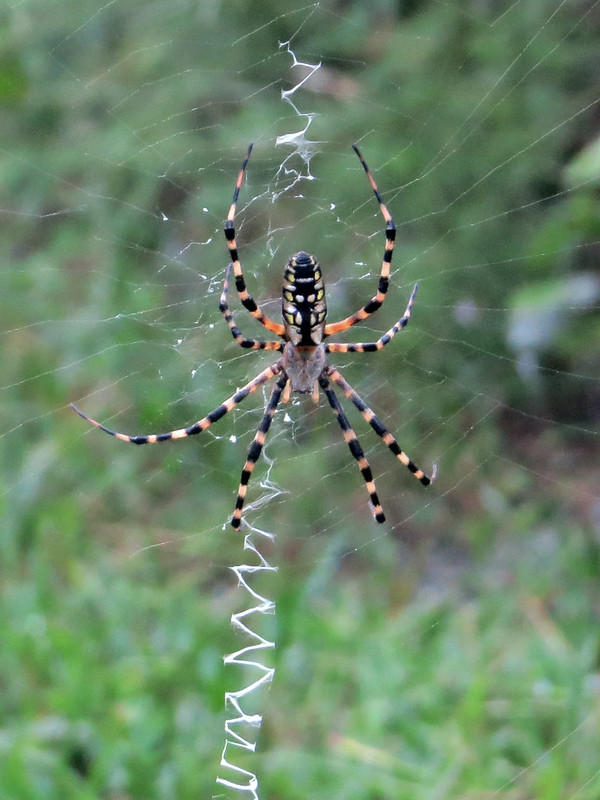
Black-and-yellow Argiope | 20 October 2014
Also on October 20th, I found a dead Tricolored Heron. Its neck looked like it might have a small injury but it appeared to be otherwise intact. This is a detail of its feathers; I also took a photo of its head.
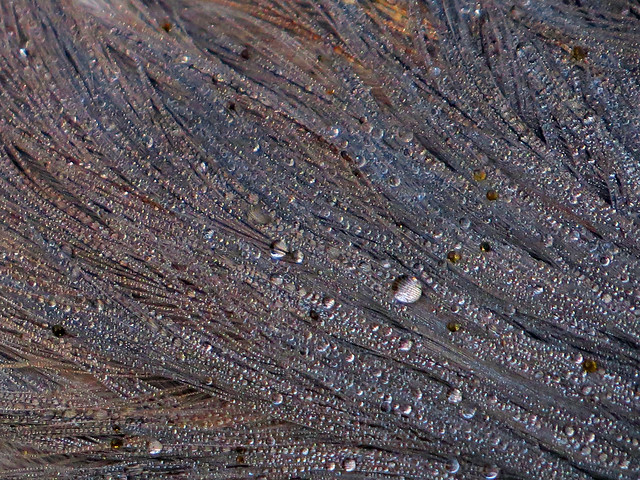
Tricolored Heron detail | 20 October 2014
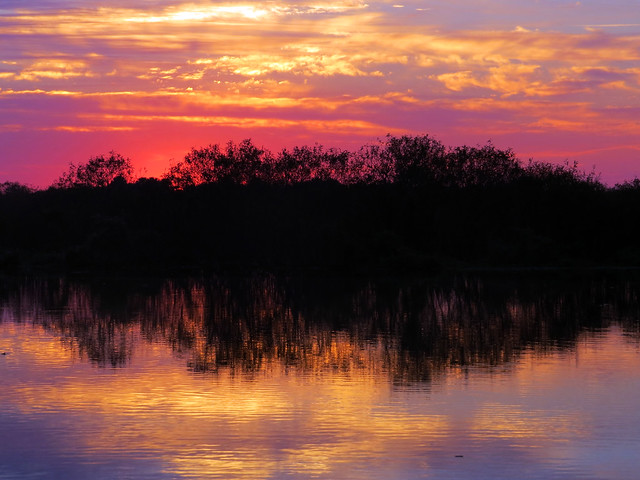
sunrise | 22 October 2014
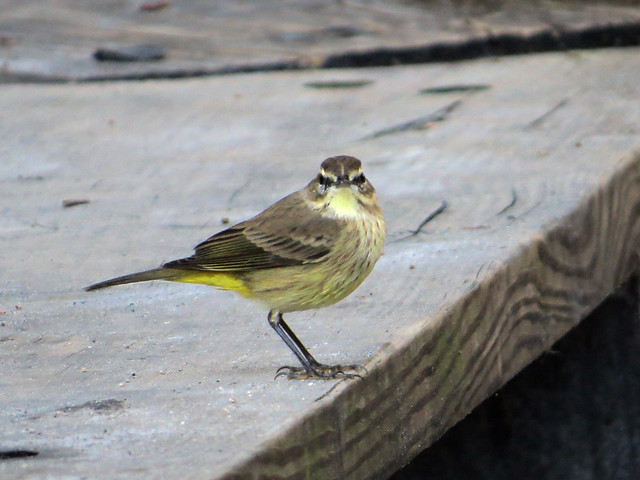
Palm Warbler | 29 October 2014
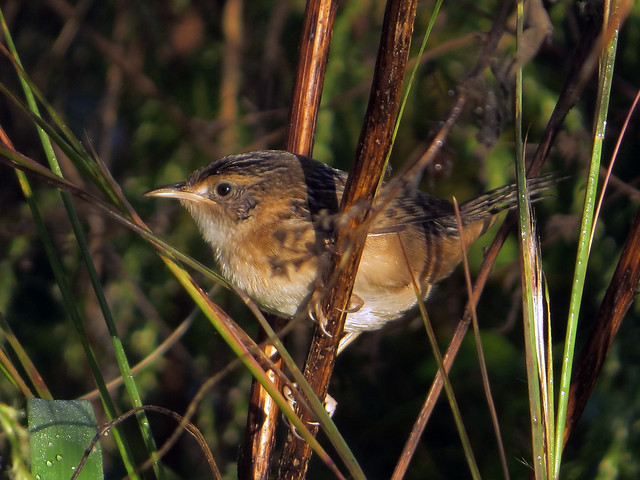
Sedge Wren | 29 October 2014

Barred Owl | 31 October 2014
By the end of the month, the water levels had decreased across the park.
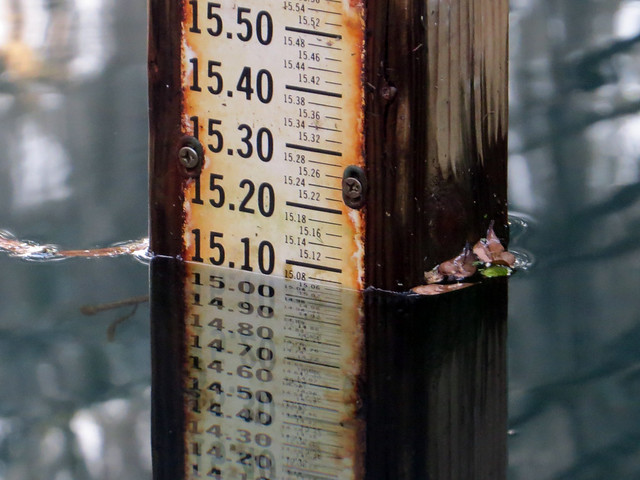
water level | 31 October 2014
October 2014 bird list, Gemini Springs
Pied-billed Grebe – Podilymbus podiceps
Double-crested Cormorant – Phalacrocorax auritus
Anhinga – Anhinga anhinga
Great Egret – Ardea alba
Little Blue Heron – Egretta caerulea
Tricolored Heron – Egretta tricolor
Cattle Egret – Bubulcus ibis
Green Heron – Butorides virescens
White Ibis – Eudocimus albus
Glossy Ibis – Plegadis falcinellus
Black Vulture – Coragyps atratus
Turkey Vulture – Cathartes aura
Osprey – Pandion haliaetus
Northern Harrier – Circus cyaneus
Accipiter sp. – Accipiter sp.
Bald Eagle – Haliaeetus leucocephalus
Red-shouldered Hawk – Buteo lineatus
Red-tailed Hawk – Buteo jamaicensis
Common Gallinule – Gallinula galeata
American Coot – Fulica americana
Sandhill Crane – Grus canadensis
Killdeer – Charadrius vociferus
Common Ground-Dove – Columbina passerina
Mourning Dove – Zenaida macroura
Barred Owl – Strix varia
Chimney Swift – Chaetura pelagica
Belted Kingfisher – Megaceryle alcyon
Red-bellied Woodpecker – Melanerpes carolinus
Yellow-bellied Sapsucker – Sphyrapicus varius
Downy Woodpecker – Picoides pubescens
Northern Flicker – Colaptes auratus
Pileated Woodpecker – Dryocopus pileatus
American Kestrel – Falco sparverius
Merlin – Falco columbarius
Eastern Phoebe – Sayornis phoebe
Loggerhead Shrike – Lanius ludovicianus
White-eyed Vireo – Vireo griseus
Red-eyed Vireo – Vireo olivaceus
Blue Jay – Cyanocitta cristata
American Crow – Corvus brachyrhynchos
Fish Crow – Corvus ossifragus
Tree Swallow – Tachycineta bicolor
Tufted Titmouse – Baeolophus bicolor
House Wren – Troglodytes aedon
Sedge Wren – Cistothorus platensis
Carolina Wren – Thryothorus ludovicianus
Blue-gray Gnatcatcher – Polioptila caerulea
Gray Catbird – Dumetella carolinensis
Brown Thrasher – Toxostoma rufum
Northern Mockingbird – Mimus polyglottos
Ovenbird – Seiurus aurocapilla
Blue-winged Warbler – Vermivora cyanoptera
Black-and-white Warbler – Mniotilta varia
Tennessee Warbler – Oreothlypis peregrina
Orange-crowned Warbler – Oreothlypis celata
Common Yellowthroat – Geothlypis trichas
American Redstart – Setophaga ruticilla
Northern Parula – Setophaga americana
Magnolia Warbler – Setophaga magnolia
Black-throated Blue Warbler – Setophaga caerulescens
Palm Warbler – Setophaga palmarum
Yellow-rumped Warbler – Setophaga coronata
Yellow-throated Warbler – Setophaga dominica
Prairie Warbler – Setophaga discolor
Summer Tanager – Piranga rubra
Northern Cardinal – Cardinalis cardinalis
Indigo Bunting – Passerina cyanea
Painted Bunting – Passerina ciris
Red-winged Blackbird – Agelaius phoeniceus
Common Grackle – Quiscalus quiscula
Boat-tailed Grackle – Quiscalus major
Baltimore Oriole – Icterus galbula



